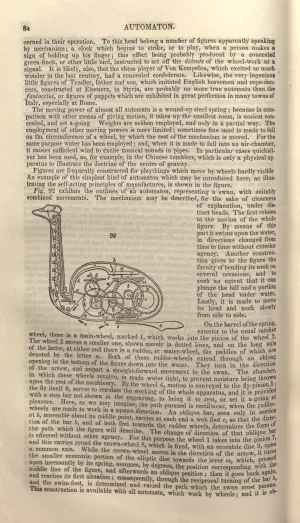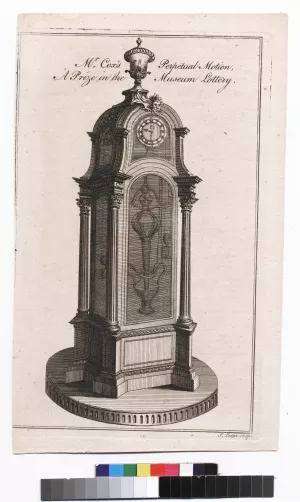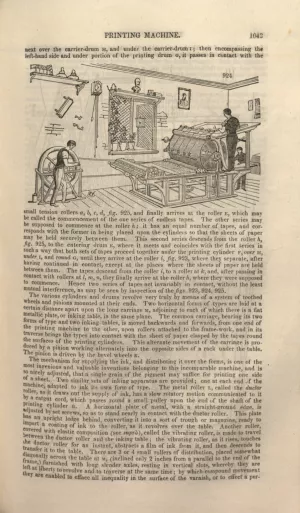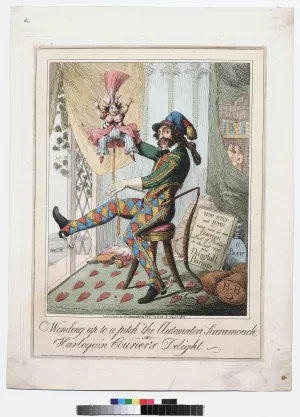Though automata have existed since antiquity, the proliferation, sophistication, and spectacle of eighteenth and nineteenth-century automata have been of particular interest for writers, scientists, philosophers, historians, and literary critics both during the Romantic period and today. The Romantic fascination with automata has been investigated using numerous theoretical and historical lenses: Freud’s essay on the uncanny; Marx’s theories of the impact of automated industry on labor in Das Kapital; and contemporary studies that link automata to the Gothic, to gender studies, to visual spectacle, and to the history of artificial life. This gallery puts “real” automata in conversation with a wide array of other machines, spectacles, and contemporary representations in order to recontextualize automata within and at the borders of the Romantic era. Consequently, this gallery seeks to show that the proliferation of automata in the eighteenth century helped shape Romantic sensibilities by producing anxieties and ambivalences around such notions as human distinctiveness, individuality in a society of replicating social types, new technologies, and international and colonial trade. Though this gallery takes diversity as one of its aims, two of the reigning themes pursued are, first, the complexities of discerning “real” as opposed to “fake” artificiality, and, second, the increasingly, though not straightforwardly, hybridized human and/or machine body. This gallery thus exhibits its own eclectic, traveling, mechanical show—from famous automata to luxury clocks, planetariums, optical devices, puppets, political caricatures, and industrial technologies; from near-perfect simulations to flat-out hoaxes; from scientific investigations to royal scandals; and with stops in London, China, Europe, and antebellum America.
Date Published
Exhibit Items
Exhibit Bibliography
Altick, Richard. The Shows of London. Cambridge, MA: Harvard UP Belknap P, 1978. Print.
Botting, Fred. “Reading Machines.” Gothic Technologies: Visuality in the Romantic Era. Ed. Orrin N.C. Wang. Romantic Circles Praxis Series. December 2005. Web. 26 January 2009.
Burney, Frances. Cecilia, or, Memoirs of a Heiress. Ed. Peter Sabor and Margaret Anne Doody. Oxford; New York: Oxford UP, 1988.
---. The Early Diary of Frances Burney 1768-1778. Ed. Annie Raine Ellis. Vol. 2. London: Bell and Sons, 1907. Print.
---. Evelina, or, A Young Lady’s Entrance Into the World: In a Series of Letters. Ed. Susan Kubica Howard. Peterborough, Ont.: Broadview Press, 2000. Print.
Le Corbeiller, Clare. “James Cox: A Biographical Review.” The Burlington Magazine 112.807 (June 1970): 351-8.
---. “James Cox and His Curious Toys.” The Metropolitan Museum of Art Bulletin 18.10 (1960): 318-24. Print.
Edwards, Steve. “Factory and Fantasy in Andrew Ure.” Journal of Design History 14.1 (2001): 17-33. Print.
Farrar, W. V. “Andrew Ure, F.R.S. and the Philosophy of Manufactures.” Notes and Records of the Royal Society of London 27.2 (1973): 299-324. Print.
French, Anne. “John Joseph Merlin: a biographical summary.” Greater London Council 11-16.
---. “Merlin, his friends, his patrons and his portrait.” Greater London Council 17-32.
Greater London Council Public Relations Branch. John Joseph Merlin: The Ingenious Mechanick. London: Greater London Council, 1985. Print.
Kirby, R.S. Kirby’s Wonderful and Eccentric Museum, or, Magazine of Remarkable Characters. Vol. 1. London, 1820. Print.
Landes, Joan. “The Anatomy of Artificial Life: An Eighteenth-Century Perspective.” Riskin 96-116.
Lodge, John. Bryan’s Dictionary of Painters and Engravers. New Edition Revised and Enlarged under the supervision of George C. Williamson. 1927. Print.
Miles, Robert. “Gothic Romance as Visual Technology.” Introduction. Gothic Technologies: Visuality in the Romantic Era. Ed. Orrin N.C. Wang. Romantic Circles Praxis Series. December 2005. Web. 19 January 2009.
O'Donoghue, F. M. “Harding, George Perfect (1779/80–1853).” Rev. Mervyn Cutten. Oxford Dictionary of National Biography. Ed. H. C. G. Matthew and Brian Harrison. Rev. ed. Oxford: Oxford UP, 2004. Web. 23 March 2009.
Pagani, Catherine. “The Clocks of James Cox: Chinoiserie and the Clock Trade with China in the Late Eighteenth Century.” Apollo 141.395 (1995): 15-22. Print.
Park, Julie. “Pains and Pleasures of the Automaton: Frances Burney’s Mechanics of Coming Out.” Eighteenth-Century Studies 40.1 (2006): 23-49. Print.
Pointon, Marcia. “Dealer in Magic: James Cox’s Jewelry Museum and the Economics of Luxurious Spectacle in Late-Eighteenth-Century London.” Economic Engagements with Art. Ed. Craufurd D. Goodwin. Durham: Duke UP, 1999. 423-51. Print. History of Political Economy Annual Supplement.
Riskin, Jessica. “Eighteenth-Century Wetware.” Representations 83 (2003): 97-125. Print.
---, ed. Genesis Redux: Essays in the History and Philosophy of Artificial Life. Chicago: U of Chicago P, 2007. Print.
---. “The Defecating Duck, or, the Ambiguous Origins of Artificial Life.” Critical Inquiry 29.4 (2003): 599-633. Print.
Smith, Roger. “James Cox (c. 1723-1800): A Revised Biography.” The Burlington Magazine 142.1167 (2000): 353-61. Print.
Ure, Andrew. "Automaton." A Dictionary of Arts, Manufactures, and Mines: Containing a Clear Exposition of their Principles and Practice. 11th ed. New York, 1847. Print.
Wise, M. Norton. “The Gender of Automata in Victorian Britain.” Riskin 163-195.
Wright, Michael. “The Ingenious Mechanick.” Greater London Council 47-59.




